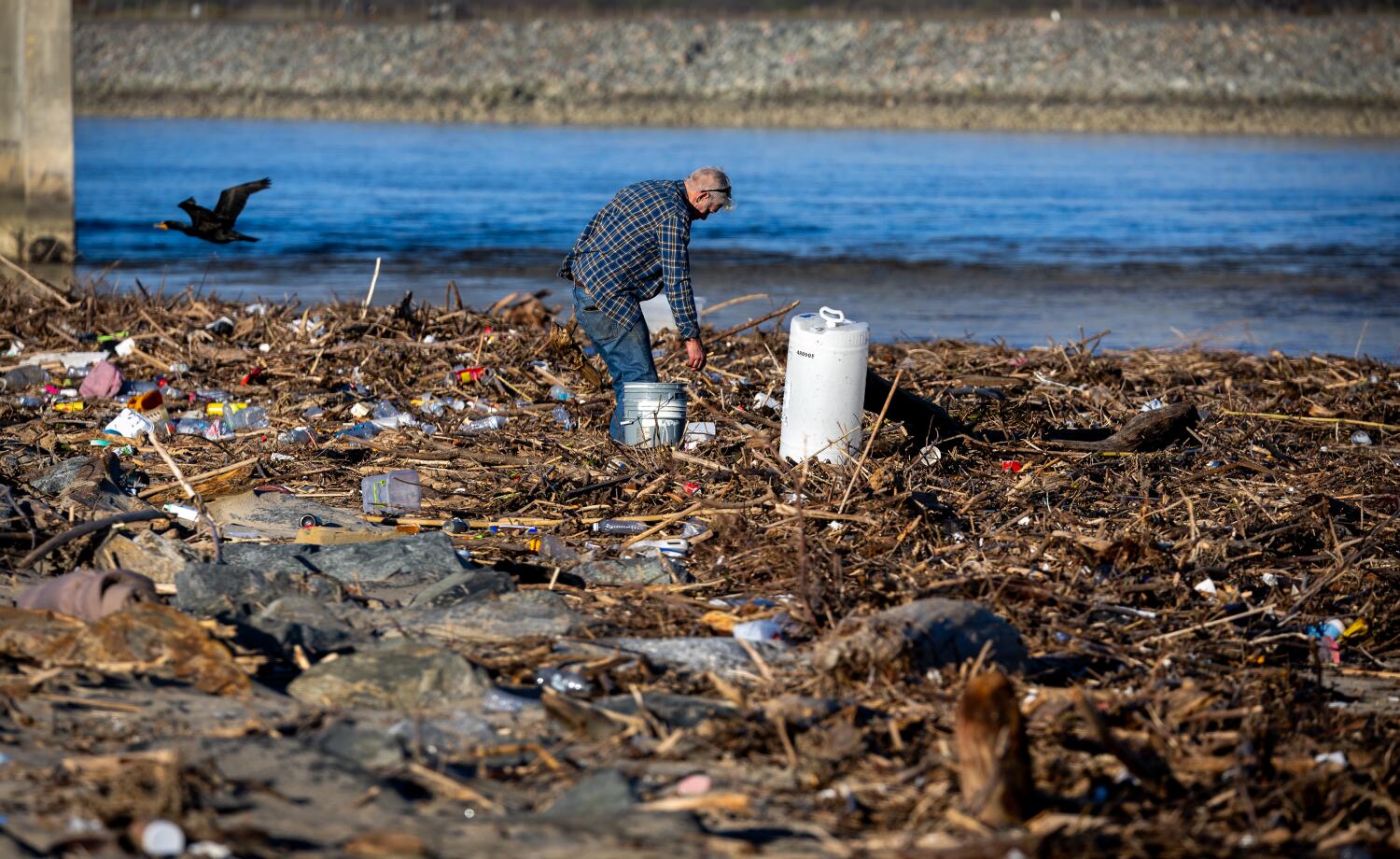
Southern Californians can prepare for another round of wet weather, with a storm expected to hit the region early next week to cap a month of historically wet weather.
The slow-moving storm is expected to reach the Los Angeles area late Monday or Tuesday morning before gradually tapering off later Tuesday, according to the National Weather Service. Between a quarter-inch and a half-inch of rain is projected to fall in coastal areas and valleys and up to an inch in the mountains.
The storm is not expected to be of the same strength as the storms earlier this month.
“It’s considerably weaker,” said Mike Wofford, NWS meteorologist in Oxnard. “This would be a light storm even in a fairly calm winter pattern.”
But because the ground is still saturated from back-to-back historic storms earlier this month that triggered debris and mud flows, damaged homes and killed several people across the state, there is still a risk of landslides in adjacent areas. to the hills. That includes the Santa Monica Mountains, the San Gabriel Mountains, the Rancho Palos Verdes area and anywhere in the Hollywood Hills.
“Landslides can happen at any time now that the grounds are so wet,” Wofford said. “Any additional rain would make things worse. “That’s something people are going to have to live with for a while until everything dries up.”
Downtown Los Angeles has received 17.79 inches of rain since the water year began on Oct. 1 and 12.56 inches in February alone, making it the fourth-wettest February since the weather service began tracking records in 1877. This February is also the wettest month in 26 years and is tied for the seventh wettest month in history.
To put things in context, downtown Los Angeles typically receives about 10 inches right now in the typical water year and about 15 inches over a 12-month period.
“If it didn’t rain between now and October, we would be almost three inches above normal for the entire year,” Wofford said. “That’s telling.”
Following three years of severe drought, California is now experiencing one of the wettest years on record. Elsewhere in the state, the storms left enough snow in the Sierra Nevada to eradicate fears of a “snow drought” and bring snowpack to 86% of normal for the date.
California’s major reservoirs are also at 118% of their average levels for this time of year.
“Some of the reservoirs had to release water before the storms approached so they could absorb the falling water,” Wofford said. “That’s not something we normally have to deal with in a typical winter.”

